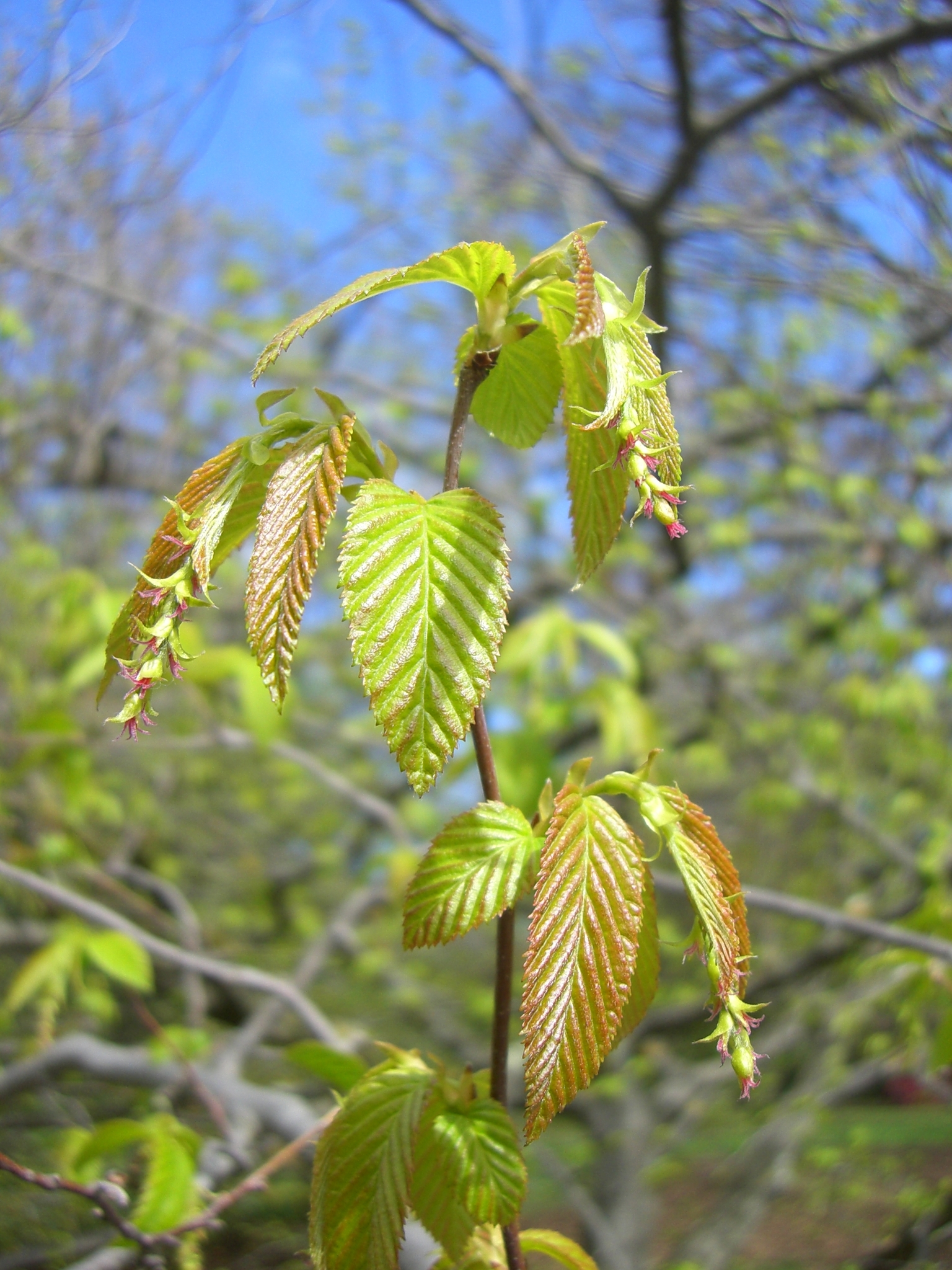
Shrub to 5 m tall. Branches with glandular hairs. Leaves mostly 5-10 cm long, roundish, cordate at the base, downy on both surfaces; margin with small irregular teeth, shallowly lobed in the upper half. Leaf stalks 0.5-1.5 cm long. Flowers in spring. Male catkins to 6 cm long. Fruits in clusters of 1-4, with clusters of toothed bracts of same length. Nuts mostly 1.5-2 cm long, more or less round.
SE Europe, SW Asia, N Africa
Cultivars have been developed both for ornament and for the edible nuts. Most of the world's commercially produced hazelnuts come from Turkey although Italy and the USA are also major producers. Although male and female flowers are produced on the same plants they are not interfertile and for commercial production it is necessary to grow cultivars that are cross-compatible in close proximity to one another. In Australia records of commercial cultivars are poor and the names of many of the older cultivars may never be known. This situation has been partly rectified by the introduction of new and known cultivars, selected for yield, vigour, cold-hardiness, suckering habit, husk qualities such as cracking quality, also the colour and shape of the kernels. Some cultivars are grown specifically for confectionery. The following are, or have until recently, been used in commercial production: 'Atlas', 'Barcelona', 'Butler', 'Cosford', 'Daviana', 'Du Chilly', 'Ennis', 'Hall's Giant', 'Imperiale de Trebizonde', 'Kentish Cob', 'Gunslebert', 'Lambert', 'Negret', 'Red Avelline', 'Segorbe', 'Tonda di Giffoni', 'Wandil's Pride', 'White Avelline'. Unlike most other fruit and nut crops hazelnuts are not grafted onto rootstocks but are propagated mostly by layers or suckers. Seedlings should not be used as they will not grow true to cultivar type. The production of hazelnuts in Australia is relatively small although some momentum has been established in the last decade or so.
ACT: Commonwealth Park. VIC: Caulfield ('Ripponlea'); Dandenongs (Alfred Nicholas Memorial Garden); Hawthorn (Xavier College, old specimen).
Several other species are occasionally available, as follows. C. americana Marshall, American Hazelnut, also has deeply cut bracts below the nuts but they extend well beyond the nut tip. C. colurna L. from Eurasia has bracts covered with hair. C. maxima Mill., Filbert, has tubular bracts that are slightly constricted above the nut. This latter species is generally available as the cultivar 'Purpurea' which has purple leaves and catkins.
Source: (1997). Betulaceae. In: . Horticultural Flora of South-eastern Australia. Volume 2. Flowering plants. Dicotyledons. Part 1. The identification of garden and cultivated plants. University of New South Wales Press.

Bushes with leaves yellowish.
Originated before 1864.
Branches twisting. Leaves slightly crisped.
Found in 1863 in a hedgerow at Frocester, England.
Vic: Mt Macedon ('Forest Glade' about 2 m in 1984).
Leaves red-brown, dark red in spring.
Originated before 1887.